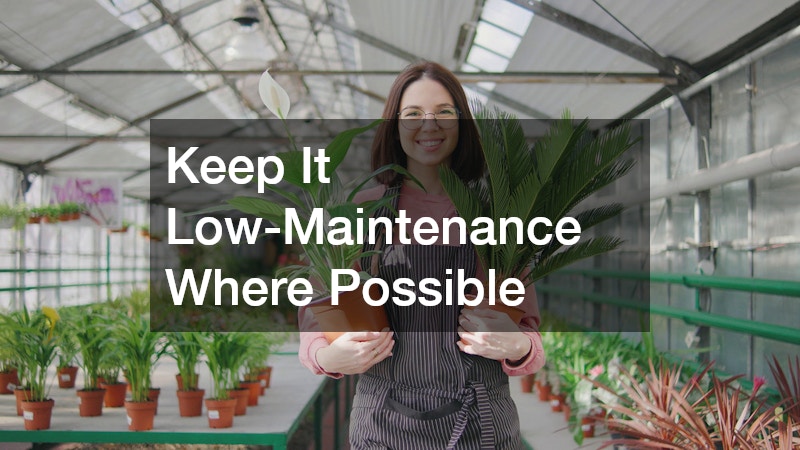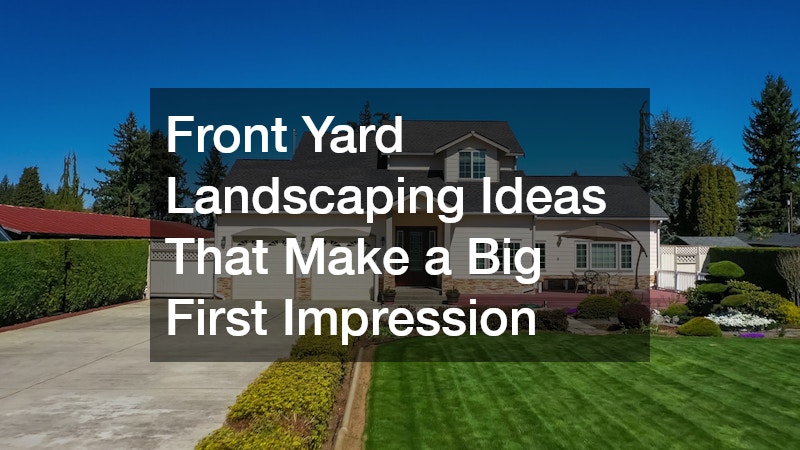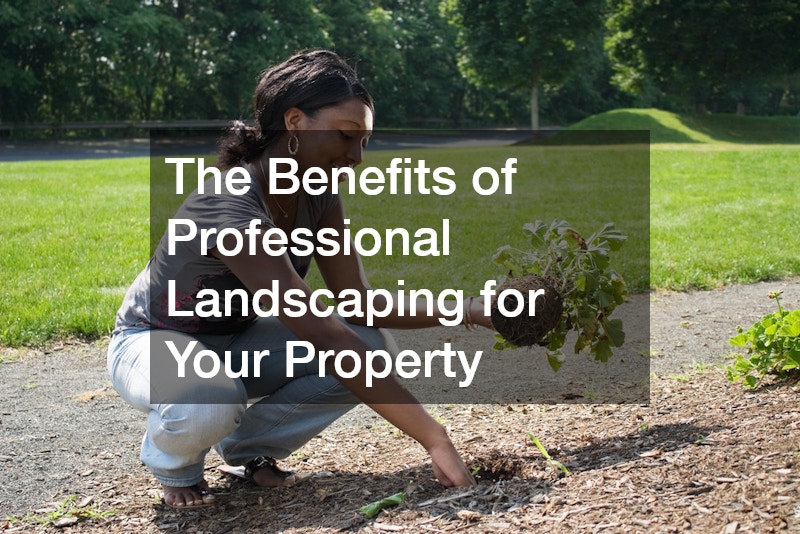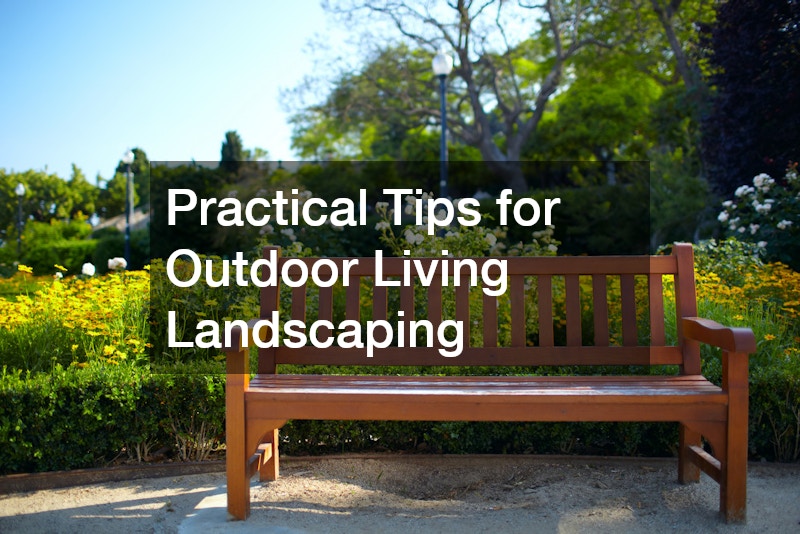Your front yard is the first thing people see when they arrive at your home, making it your outdoor handshake to the world. Whether you’re preparing to sell your house, want to impress neighbors, or simply crave a more beautiful entrance, great front yard landscaping can set the tone. From creative planting to hardscaping and lighting, there are many ways to transform your yard into a warm and inviting space.
Let’s explore some of the most effective front yard landscaping ideas to make a big first impression with the help of a professional landscape contractor!
Create a Clear and Inviting Pathway
Your walkway should lead visitors naturally from the curb or driveway to your front door. A well-defined path adds structure and balance to your yard while enhancing safety and accessibility.
-
Use stone, brick, or pavers to create texture and visual interest.
-
Border the path with plants or lighting to highlight the design.
-
Avoid straight lines unless your home has a very formal architectural style; curves often feel more organic and welcoming.
When choosing materials, try to complement your home’s exterior color and style to create a cohesive look.
Layer Your Landscaping for Visual Depth
One of the most visually appealing techniques in front yard design is layering. By placing plants of varying heights and textures in a staggered arrangement, you create movement and dimension.
-
Place taller shrubs or ornamental grasses in the back.
-
Use medium-sized bushes and flowering plants in the middle layer.
-
Add groundcovers, mulch, or small annuals at the front.
This tiered approach works especially well near porches, fences, or along walkways. It also helps soften structural elements and makes your landscaping feel lush and complete.
Focus on Foundation Planting
Foundation planting refers to landscaping near the base of your house. It frames your home and softens hard architectural lines.
-
Choose evergreen shrubs for year-round structure.
-
Mix in perennials or flowering plants to add seasonal interest.
-
Avoid planting too close to the foundation, which can trap moisture or lead to maintenance issues.
Proper foundation planting enhances your home’s aesthetic and can help reduce energy costs by adding natural insulation.
Install Statement Trees or Shrubs
If your front yard has the space, a statement tree or large shrub can serve as a powerful focal point. This element draws the eye and helps anchor your design.
Great options for statement plants include:
-
Japanese maple for rich color and elegant shape
-
Crape myrtle for summer blooms and multi-season interest
-
Boxwood topiary for a clean, formal appearance
Make sure the plant fits the scale of your yard—oversized trees can overwhelm the space, while tiny shrubs might look underwhelming.
Add Color With Flower Beds
Bright, healthy flowers can bring instant charm to your front yard. Whether you prefer subtle pastels or bold, contrasting hues, colorful plantings make any space feel more inviting.
-
Plant flower beds along the walkway, near the porch, or under windows.
-
Use a mix of annuals and perennials for season-long blooms.
-
Consider color theory: warm tones (reds, oranges, yellows) are energetic and welcoming, while cool tones (blues, purples, whites) offer a more serene feel.
Flower beds don’t need to be large—small but well-maintained plantings can still have a big impact.
Incorporate Hardscaping for Balance
Hardscaping adds function and structure to your landscape. Think of it as the “bones” of your outdoor space, complementing the softer, living elements.
Consider adding:
-
A retaining wall or raised planter for height variation
-
A stone border or edging around flower beds
-
A decorative mailbox or garden bench for extra charm
Hardscaping also helps with maintenance and erosion control, especially on sloped lots or in areas prone to heavy rain.
Use Lighting to Highlight Your Design
Don’t let your landscaping disappear after sunset. Lighting enhances curb appeal, adds safety, and shows off your hard work even at night.
-
Use path lights along walkways for guidance and mood.
-
Add uplights to highlight trees, architectural features, or tall shrubs.
-
Install porch lighting or sconces to bring warmth to the front entry.
Opt for warm white bulbs to create a soft, welcoming glow. Solar-powered options are great for energy savings and easy installation.
Keep Your Lawn Neat and Trimmed
Even the best landscape design can be overshadowed by a patchy or overgrown lawn. A healthy, well-maintained lawn by a landscape contractor creates a clean backdrop and enhances everything around it.
Tips for a pristine lawn:
-
Mow regularly and keep edges clean.
-
Fertilize and aerate seasonally for strong growth.
-
Water early in the morning to reduce evaporation and prevent disease.
If grass isn’t thriving in certain areas, consider replacing it with mulch, decorative gravel, or groundcovers that require less upkeep.
Add Personalized Touches
Make your front yard truly your own by adding custom elements that reflect your personality and lifestyle.
Ideas include:
-
Seasonal planters or hanging baskets
-
House numbers in a unique font or material
-
A decorative door wreath or porch furniture
These small details help tie the whole space together and give it that extra sense of warmth and individuality.

Keep It Low-Maintenance Where Possible
Big first impressions don’t have to come with big upkeep. If time is a factor, consider incorporating low-maintenance landscaping solutions such as:
-
Drought-tolerant plants like lavender, salvia, or yarrow
-
Automatic drip irrigation systems
-
Mulch beds to retain moisture and reduce weeds
Strategic plant selection and smart design choices can help you maintain a stunning front yard without spending every weekend on yardwork.
A Lasting First Impression
A thoughtfully designed front yard tells the story of your home before anyone steps inside. Whether you’re making subtle improvements or planning a full-scale renovation, these landscaping ideas can boost curb appeal, highlight your home’s best features, and create an inviting atmosphere.
If you’re unsure where to begin or want professional help bringing your vision to life, consider working with a local landscape contractor that understands your region’s climate, soil, and design trends.



